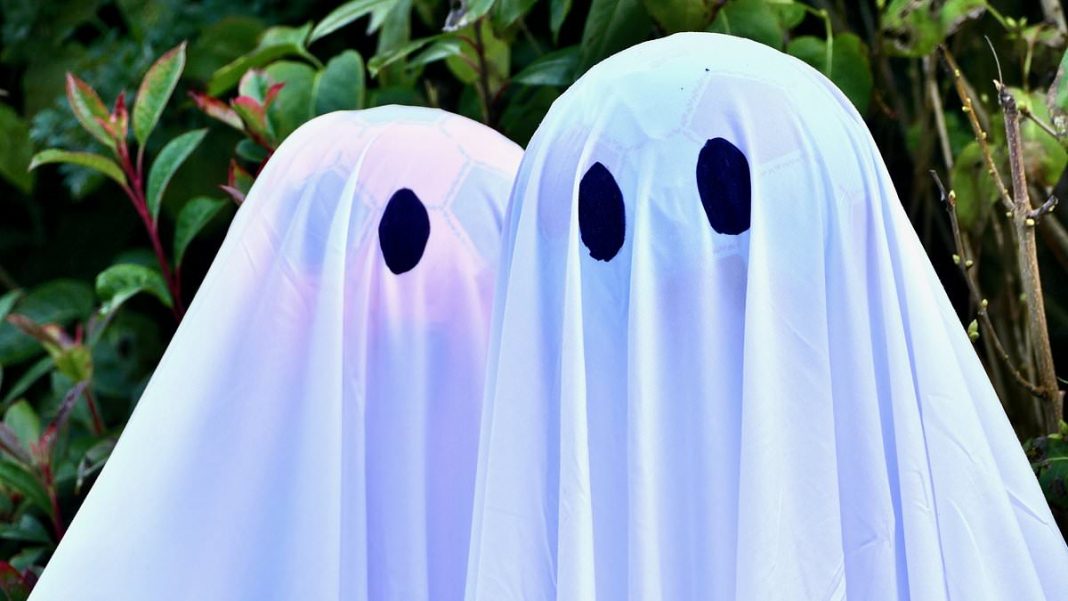Some people DO see ghosts – and medics say there’s an explanation,
Creaking floorboards, things that go ‘bump’ in the night, and a sneaking sense you’re not alone.
An astonishing third of people in the UK and almost half of Americans say they believe in ghosts, spirits and other types of paranormal activity.
Meanwhile, one in five say they’ve actually seen an apparition and one in ten have directly communicated with the dead, surveys suggest.
But could there be a more down-to-earth medical explanation for these spooky phenomena?
Yes, say experts who suggest a bizarre common condition known as sleep paralysis as a major reason for perceived hauntings.
According to the NHS, sleep paralysis is when you cannot move or speak as you are waking up or falling asleep.
It occurs at a specific stage in the sleep cycle known as REM sleep, when the brain is highly active but the body still ‘asleep’.
The most vivid dreams are thought to occur during this stage and it is believed that sleep paralysis occurs when people wake during it.
Some sufferers of the condition also report a feeling of pressure on the chest and can experience hallucinations, including terrifying figures.
Descriptions of the condition can be found in folklore dating back hundred of years when it was given names such as ‘old hag’ — due to the idea that a witch-like ghoul was sitting on the chest of the sufferer.
Modern science can’t explain why it occurs, however it is known to be more prevalent in those who suffer insomnia, post-traumatic stress disorder and anxiety.
Another cause of ghost-sightings could be far more worrying: carbon monoxide.
The colourless, scentless gas may be emitted by poorly installed, faulty, or improperly used appliances like boilers, gas ranges and grills.
It is poisonous and can cause a range of symptoms including headaches, confusion, dizziness and nausea.
Carbon monoxide can also trigger hallucinations, which medical experts as far back as the 1920s have linked to reports of hauntings.
Seeing ghosts could also be down to a brain abnormality, studies suggest.
In 2017, a leading medical journal published the story of a 26-year-old patient with epilepsy who was undergoing experimental treatment that involved electrodes being implanted in his brain.
When the medics at National Center for Adaptive Neurotechnologies at the New York State Department of Health simulated are region of the brain known as the fusilform face area, or FFA, he suffered frightening hallucinations.
‘Your face changed completely,’ he reportedly said, staring at one of the researchers. ‘I don’t know what’s going on. Your eyes…change.’
He described those around around him as looing like ‘anime characters’ — referring to the Japanese cartoon genre.
Stimulating the FFA also caused rainbows to appear around objects, the researchers added.
In a separate experiment on another epilepsy sufferer — a 22-yeart-old woman — found stimulating the brain’s left hemisphere caused her to feel ‘a person’ or ‘shadow’ which did not move of speak was standing directly behind her.
These findings could offer some insight into why up to half of people diagnosed with neurological condition Parkinson’s — which causes progressive brain damage —also claim to see ghostly figures.
Meanwhile, recent research has revealed the reason up to half of people claim to ‘hear’ the voice of a deceased loved one during periods of grieving.
This is believed to be due to the ways the brain creates what are termed in psychology as schemas — a mental framework that helps people organise and interpret information, based on past experiences.
When we go into a restaurant, we know from experience that we will be greeted, then seated, then offered drinks and a menu and so on.
In the same way, couples become so accustomed to each others’ presence at home — so much so, even when one is gone, it feels like they are still there at times.
Bereaved partners also often describe being able to hear their husband or wife speaking, according to grief counsellors.
So, if you spot a ghost — don’t panic, but consider what else could be to blame.
On the other hand, there may be no credible scientific evidence of life after death… that doesn’t rule it out entirely.









